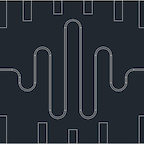Image

Quantum control of an oscillator using a stimulated Josephson nonlinearity
Publication Year
2020
Type
Journal Article
Journal
Nature Physics
Volume
16
Pages
211-217
Full text
Superconducting circuits extensively rely on the Josephson junction as a nonlinear electronic element for manipulating quantum information and mediating photon interactions. Despite continuing efforts in pushing the coherence of Josephson circuits, the best photon lifetimes have been demonstrated in microwave cavities. Nevertheless, architectures based on quantum memories require a qubit element for logical operations at the cost of introducing additional loss channels and limiting process fidelities. Here, we directly operate the oscillator as an isolated two-level system by tailoring its Hilbert space. Implementing a flux-tunable inductive coupling between two resonators, we can selectively Rabi drive the lowest eigenstates by dynamically activating a three-wave interaction through parametric flux modulation. Measuring the Wigner function confirms that we can prepare arbitrary states confined in the single-photon manifold, with measured coherence times limited by the oscillator intrinsic quality factor. This architectural shift in engineering oscillators with stimulated nonlinearity can be exploited for designing long-lived quantum modules and offers flexibility in studying non-equilibrium physics with photons in a field-programmable simulator.

